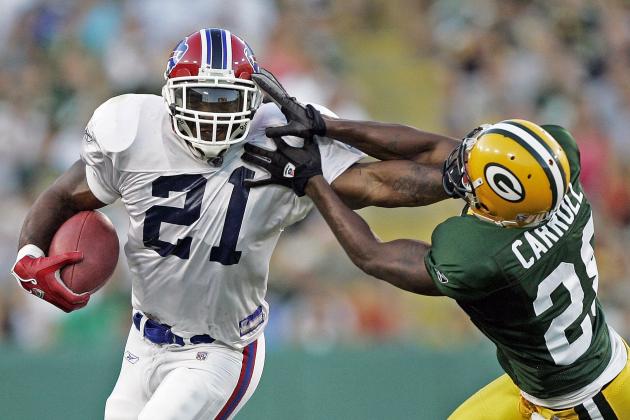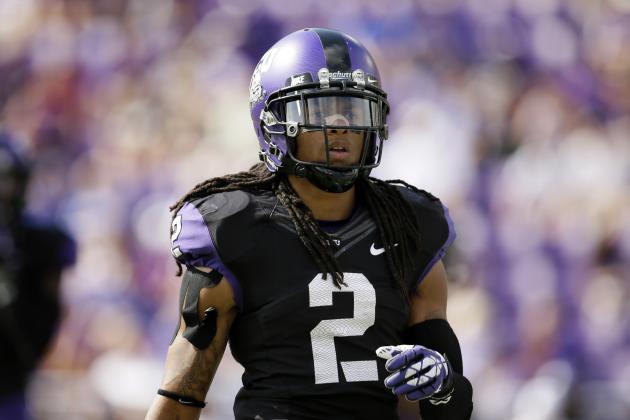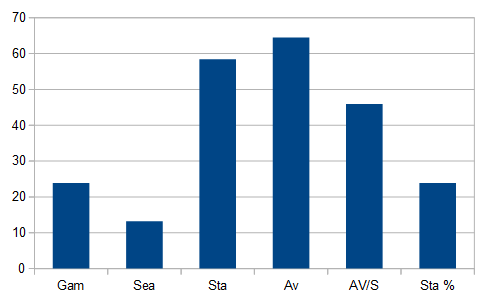
Ted Thompson
Ted Thompson left the Seattle Seahawks in 2005. He was the vice president of football operations under Mike Holmgren, who he had worked under from 1992 to 1998 in Green Bay.
The job Thompson returned to Title Town for in 2005 was the general manager gig. Mike Sherman, who was hired as Green Bay’s head coach in 2000, after a one-year experiment with the Ray Rhodes staff, was the general manager before Thompson’s arrival.
In Sherman’s first year as a head coach, Ron Wolf (man, myth, legend) was the general manager. He drafted three Pro Bowlers in Bubba Franks, Chad Clifton and Kabar Gbaja-Biamila. In the four classes that Sherman was the general manager for, there were two total Pro Bowlers drafted out of 27 draft selections. In his final three drafts, he traded away the Packers’ second round pick.
In many ways, Sherman was the anti-Thompson. Even his two “hits” were short lived. Aaron Kampman was a two-time Pro Bowl defensive end who had a great three-year stretch in Green Bay before he was injured, they transitioned to a 3-4 defense and he hit free agency. This all happened after Sherman was fired after the 2005 season. Javon Walker made the Pro Bowl in Sherman’s final season as a general manager, but tore his ACL in Week 1 of Sherman’s final season as a head coach. In the 2006 offseason, Walker would be traded to the Oakland Raiders. Walker had 1,382 receiving yards in 2004. He had 1,594 receiving yards in the remainder of his NFL career.
The pick that best encapsulates the Sherman-Thompson split in ideology is Ahmad Carroll, Sherman’s final first-round selection. According to NFL Draft Scout, the Razorback corner measured in at 5095 (5’9 5/8ths”), but impressed at the combine with a 4.38-second 40-yard dash, a 41″ vertical and a 10’8″ broad jump.
He was an All-American track athlete at Arkansas, but height has to matter at some point, even if Carroll did have 32″ arms, which rank in the 67th percentile of cornerbacks per Mock Draftable. Thompson developed his ideology under Wolf who developed his ideology under Al Davis. Small cornerbacks weren’t their forte. For some reason, be it limited upside or bust rate, they viewed them as prospects to avoid.
By Week 5 of 2006, Carroll’s third season in the league, he was cut due to performance issues. He was on the Jacksonville Jaguars and New York Jets rosters for stints, but he never made another start in the NFL. At 22 years old, Thompson cut ties with the short, but athletic, former first-rounder. He was proven right by the remainder of Carroll’s career.
Since then, the Packers haven’t drafted a cornerback with the height of 5104 or under. I do not know why exactly, but it’s a fact of Thompson’s 11-year reign as Green Bay’s general manager. The franchise just isn’t going to even consider putting cornerbacks of that size on its board.
Math
Here’s the important part: Is he right in doing so? Sure, he was proven right about Carroll, but what about cornerbacks in general, instead of a one-player sample?
For this study, we’ll look at first-round corners since Carroll. These are the cornerbacks who measured in at the combine at 5104 or under who were drafted in the first round between 2005 and 2015:
- Adam “Pacman” Jones
- Fabian Washington
- Tye Hill
- Leodis McKelvin
- Mike Jenkins
- Kyle Wilson
- Kareem Jackson
- Jason Verrett
Is that a good list? Bad list? Those names mean nothing without context. We’ll compare and contrast them with cornerbacks with the height of 5105 or taller. First, though, we need to make a cutoff point for recency bias. The second-to-last “short corner” drafted in the first round was Kareem Jackson in 2010.
From 2005-2010, seven of the 24 cornerbacks taken in the first round were short corners, good for 29.2 percent of the pool. From 2011-2015, one of the 15 cornerbacks taken in the first round were short corners, a drastic drop to 6.7 percent. Because of the one-corner sample of Jason Verrett, which everyone loves to bring up, in a five-class span, it’s best to drop the newest data all together.
You can convince me to simply exclude players on rookie contracts or in their first three years of the league, but the 2010 class is a clean break. The numbers tell the same story with the cutoff being 2010 or 2015, but it is less defined when including young players who are still finding their way onto the field behind veterans.
It should be noted, the 2011 class includes Patrick Peterson, who, by the standards we’re measuring cornerback success, is the most statistically dominant at the position since 2005. Peterson would have been in the non-short corner category. There’s no bias in picking 2010 as the cutoff season.
The best way to compare-contrast the two categories is with easy to use, non-biased numbers. All of these stats come from Pro Football Reference:
- Games played (Gam)
- Games started (Sta)
- Approximate Value (AV)
- Seasons (Sea)
From there, we can create two more categories:
- Approximate Value/Season (AV/Sea)
- Starting percentage (St %)
These two categories help us use this data in context. Starting percentage allows us to tell easily if a player was more of a role player than starter in his career, which I would say matters for first-round picks. First-round picks should be impact players. Approximate Value/Season gives us an average year-to-year impact of a player, which I believe is a fair way to look at a cornerback’s career.
The results are interesting.
Cornerbacks who are 5105 or taller from the 2005-2010 draft classes averaged 108.9 games played in, 90.8 starts, an Approximate Value of 46.3 on their career, 7.8 seasons played, an Approximate Value per season of 5.8 and a starting percentage of 81.1%.
Cornerbacks who are 5104 or shorter from the 2005-2010 draft classes averaged 87.9 games played in, 57.3 starts, an Approximate Value of 28.1 on their career, 6.9 seasons played, an Approximate Value per season of 4 and a starting percentage of 65.4%.
The difference between the two groups is 21 games played, 33.5 games started, an Approximate Value of 18.2 (which for reference is about half of Joe Haden’s 40-point career,) .9 seasons played, 1.8 Approximate Value per year and a starting percentage of 15.6%, all in favor of non-short corners.
What’s most interesting to me is that the number of games played and the number of seasons played are fairly similar between the two groups. Non-short corners play 23.9% more games and play 13.2% more seasons, sure, but the volume statistics aren’t as drastic as much as the performance statistics. Non-short corners start 58.4% more games, have a higher Approximate Value by 64.5%, have a higher Approximate Value/Season by 45.9% and start 23.9% more games than short corners.

Here is the 2005-2010 data set sorted by various categories:
Here’s a look at the 2005-2015 data with the 2011-2015 non-short corners highlighted in light blue and Jason Verrett, the singular 2011-2015 short corner, highlighted in pink.
Give the data sample, which stretches longer than a decade, it’s fair to say that history favors avoiding smaller corners. In this draft class, there are two cornerbacks, Mackensie Alexander of Clemson and Vernon Hargreaves III of Florida, who fall short of 5105 and are considered potential first-round picks. Alexander is 5096, Shorter than every first-round cornerback since 2005 other than Verrett, Adam “Pacman” Jones and Tye Hill, another former Tiger corner. Hargreaves is 5102, which puts him past Kyle Wilson and with Leodis McKelvin and Mike Jenkins.
Other short corners with draftable grades from NFL Draft Scout are Cyrus Jones of Alabama, Kevin Peterson of Oklahoma State, Jonathan Jones of Auburn, Briean Boddy-Calhoun of Minnesota, Tavon Young of Temple, Donte Deayon of Boise State and Crevon LeBlanc of Florida Atlantic.
Justis Mosqueda
Latest posts by Justis Mosqueda (see all)
- 2016 Force Players-Official Combine Sheet Update - April 8, 2016
- Force Players: Retention Rate - April 6, 2016
- Myth: Shaq Lawson Isn’t Athletic - April 5, 2016
